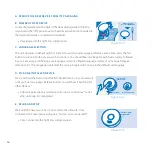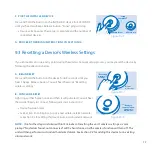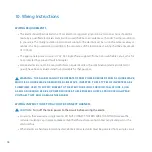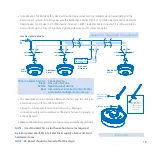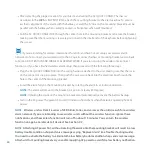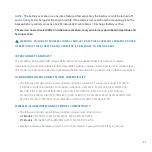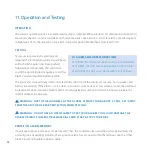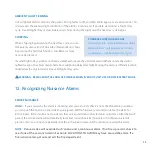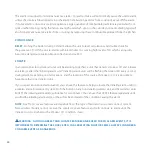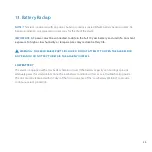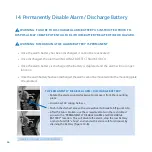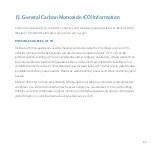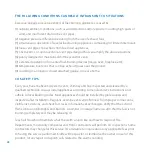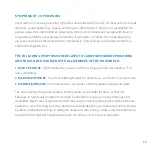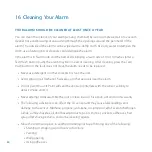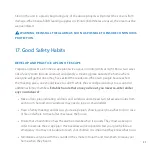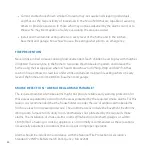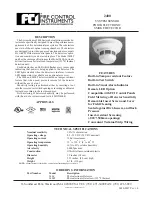
30
16. Cleaning Your Alarm
YOUR ALARM SHOULD BE CLEANED AT LEAST ONCE A YEAR
You can clean the interior of your alarm (sensing chamber) by using compressed air or a vacuum
cleaner hose and blowing or vacuuming through the openings around the perimeter of the
alarm. The outside of the alarm can be wiped with a damp cloth. Use only water to dampen the
cloth, use of detergents or cleaners could damage the alarm.
If the alarm is in Fault mode and the Red LED is blinking a fault code of 10 or 14 flashes (after a
Test/Hush button push), the alarm may be in need of cleaning. After cleaning, press the Test/
Hush button. If the fault does not clear, the alarm needs to be replaced.
•
Never use detergent or other solvents to clean the unit.
•
Avoid spraying air freshener, hair spray, or other aerosols near the alarm.
•
Do not paint the unit. Paint will seal the vents and interfere with the sensor’s ability to
detect smoke and CO.
•
Never attempt to disassemble the unit or clean inside. This action will void your warranty.
•
The following substances can affect the CO sensor and may cause false readings and
damage to the sensor: Methane, propane, isobutane, iso-propanol, ethyl acetate, hydrogen
sulfide, sulfide dioxides, alcohol based products, paints, thinner, solvents, adhesives, hair
spray, after shave, perfume, and some cleaning agents.
•
Move the Alarm and place in another location prior to performing any of the following:
•
Staining or stripping wood floors or furniture
•
Painting
•
Wall papering
•
Using adhesives

